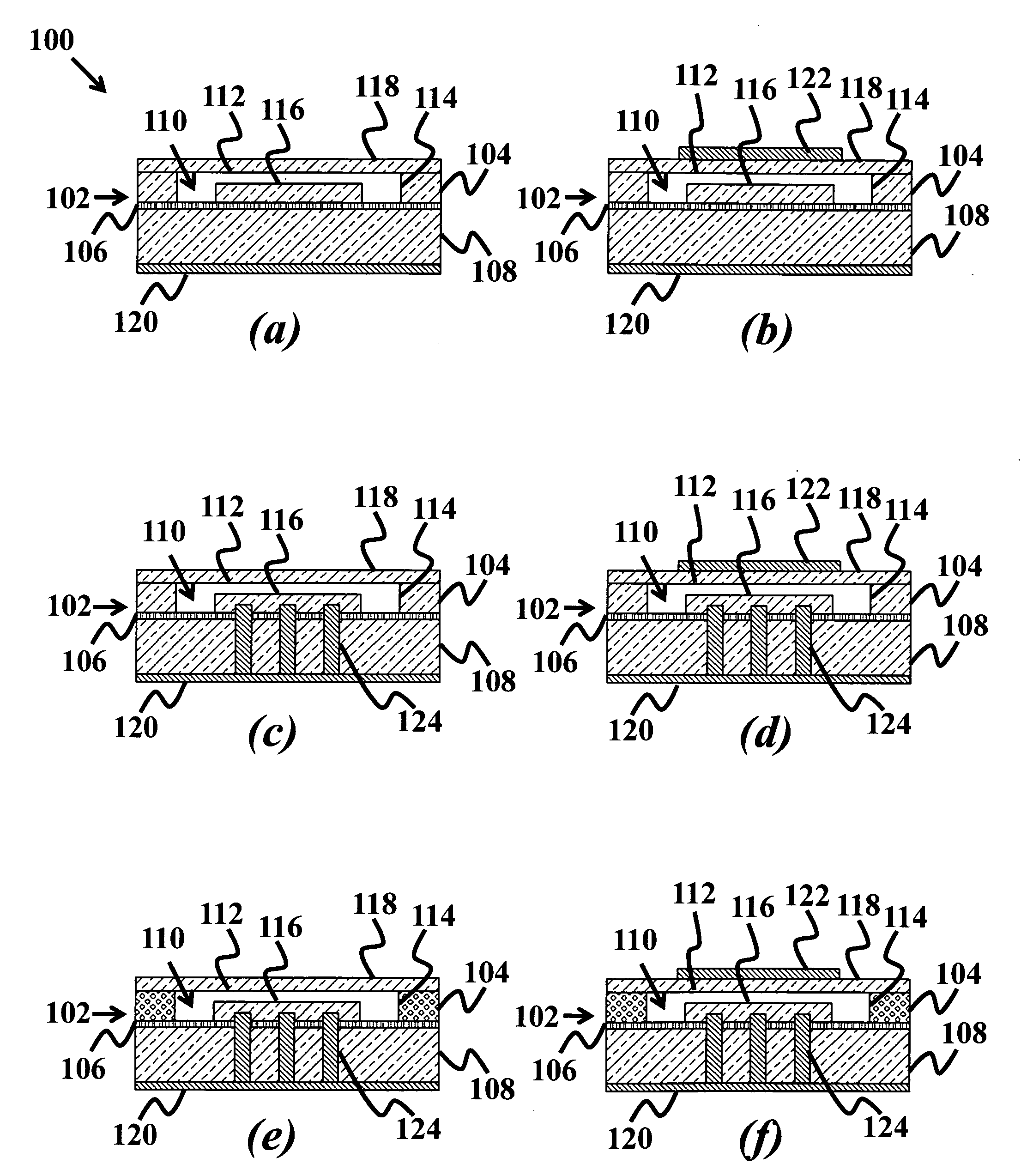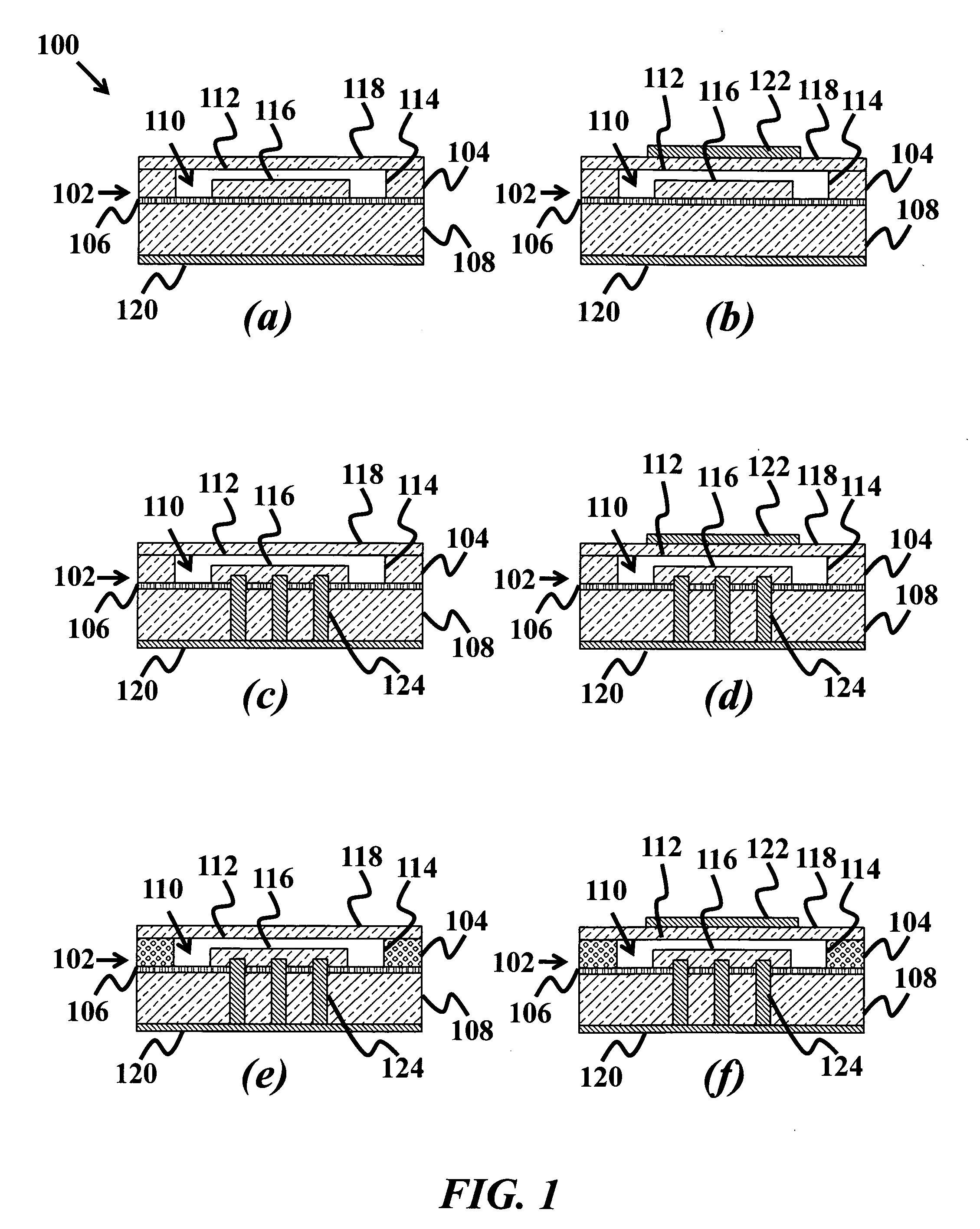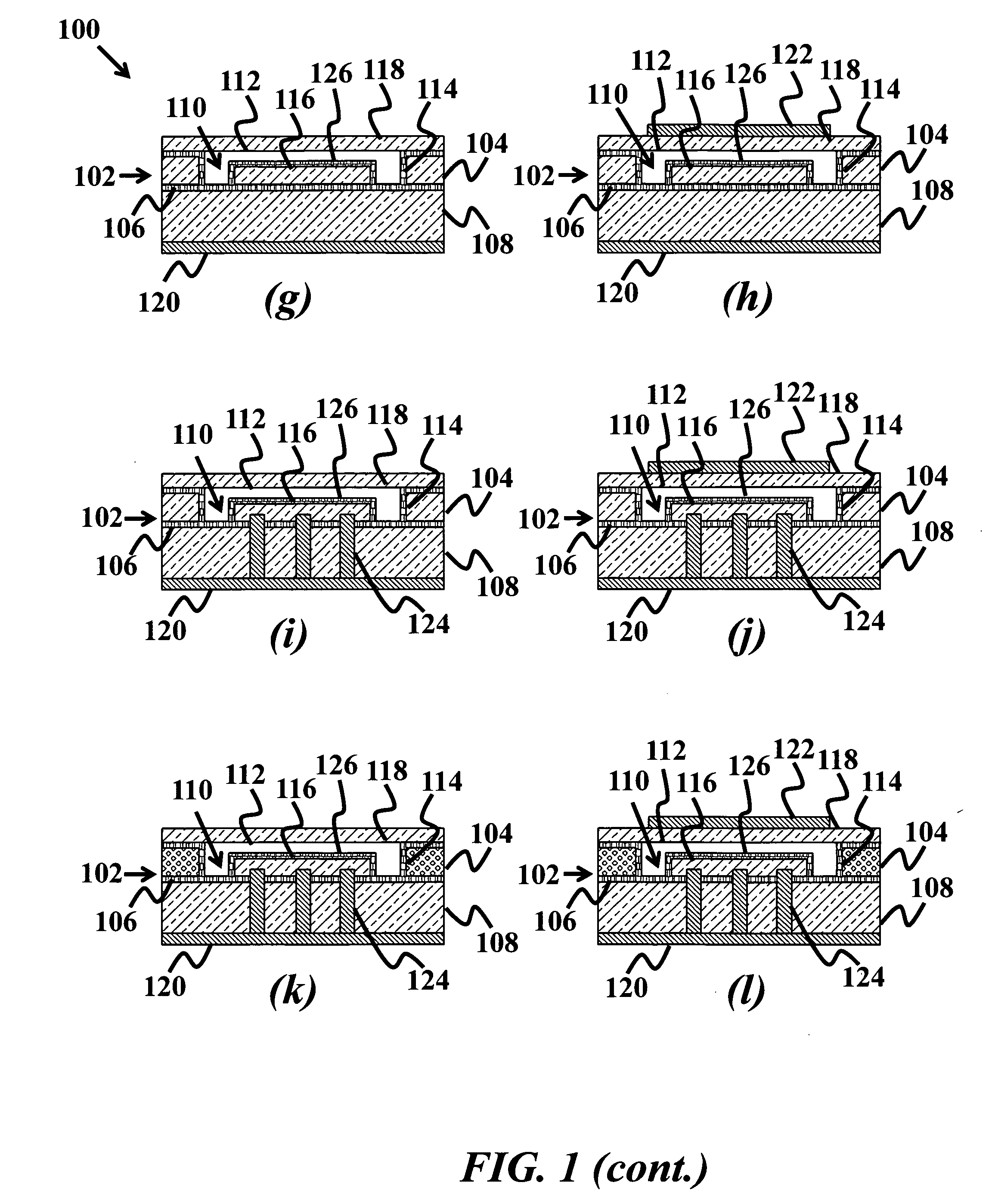High-temperature electrostatic transducers and fabrication method
a transducer and high-temperature technology, applied in the field of electrostatic transducers, can solve the problems of significant degrading of transducer sensitivity, the limiting factor of the insulation structure/layer, and the likelihood of an electrical breakdown of the insulation structure,
- Summary
- Abstract
- Description
- Claims
- Application Information
AI Technical Summary
Benefits of technology
Problems solved by technology
Method used
Image
Examples
Embodiment Construction
[0053]Although the following detailed description contains many specifics for the purposes of illustration, anyone of ordinary skill in the art will readily appreciate that many variations and alterations to the following exemplary details are within the scope of the invention. Accordingly, the following preferred embodiment of the invention is set forth without any loss of generality to, and without imposing limitations upon, the claimed invention.
[0054]FIGS. 1(a)-1(r) show different embodiments of the high temperature micromachined ultrasonic transducer (HTCMUT), according to the current invention. FIG. 1(a) shows a HTCMUT having a silicon on insulator (SOI) substrate 102, wherein the SOI substrate 102 includes a doped first silicon layer 104 and a first insulating layer 106, a doped second silicon layer 108, where the first insulating layer 106 is disposed between the first silicon layer 104 and the second silicon layer 108. The HTCMUT 100 further includes a cavity 110 in the fir...
PUM
| Property | Measurement | Unit |
|---|---|---|
| thickness | aaaaa | aaaaa |
| hole diameter | aaaaa | aaaaa |
| thickness | aaaaa | aaaaa |
Abstract
Description
Claims
Application Information
 Login to View More
Login to View More - R&D
- Intellectual Property
- Life Sciences
- Materials
- Tech Scout
- Unparalleled Data Quality
- Higher Quality Content
- 60% Fewer Hallucinations
Browse by: Latest US Patents, China's latest patents, Technical Efficacy Thesaurus, Application Domain, Technology Topic, Popular Technical Reports.
© 2025 PatSnap. All rights reserved.Legal|Privacy policy|Modern Slavery Act Transparency Statement|Sitemap|About US| Contact US: help@patsnap.com



